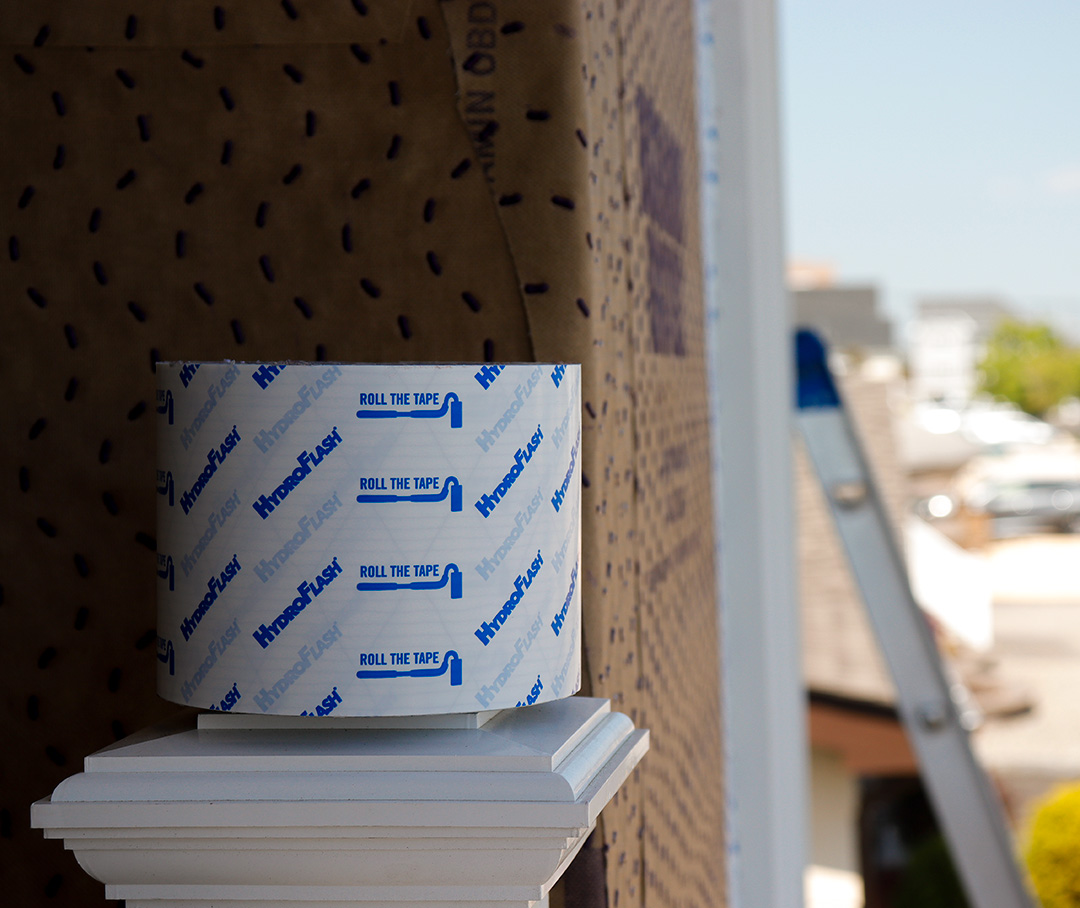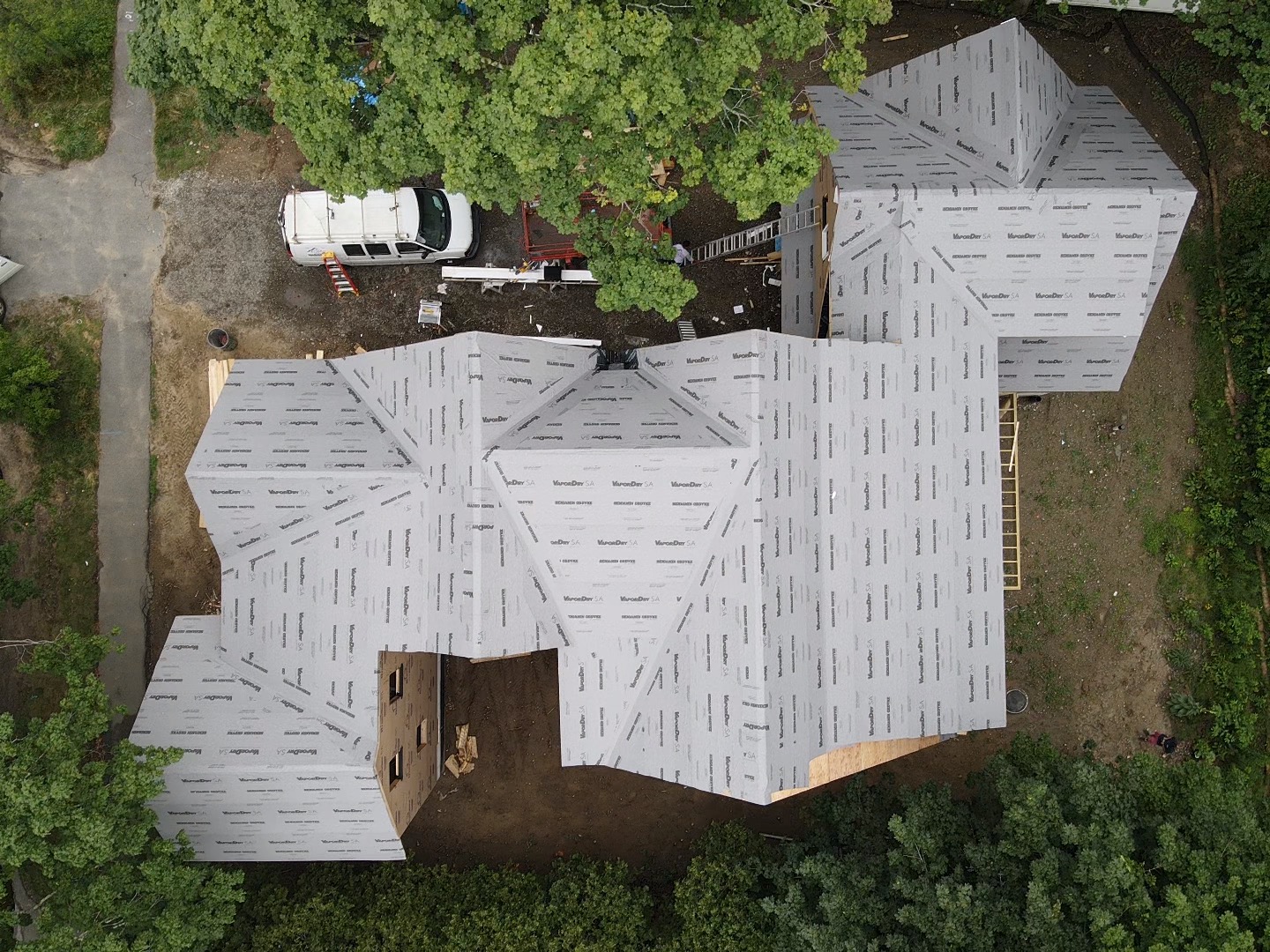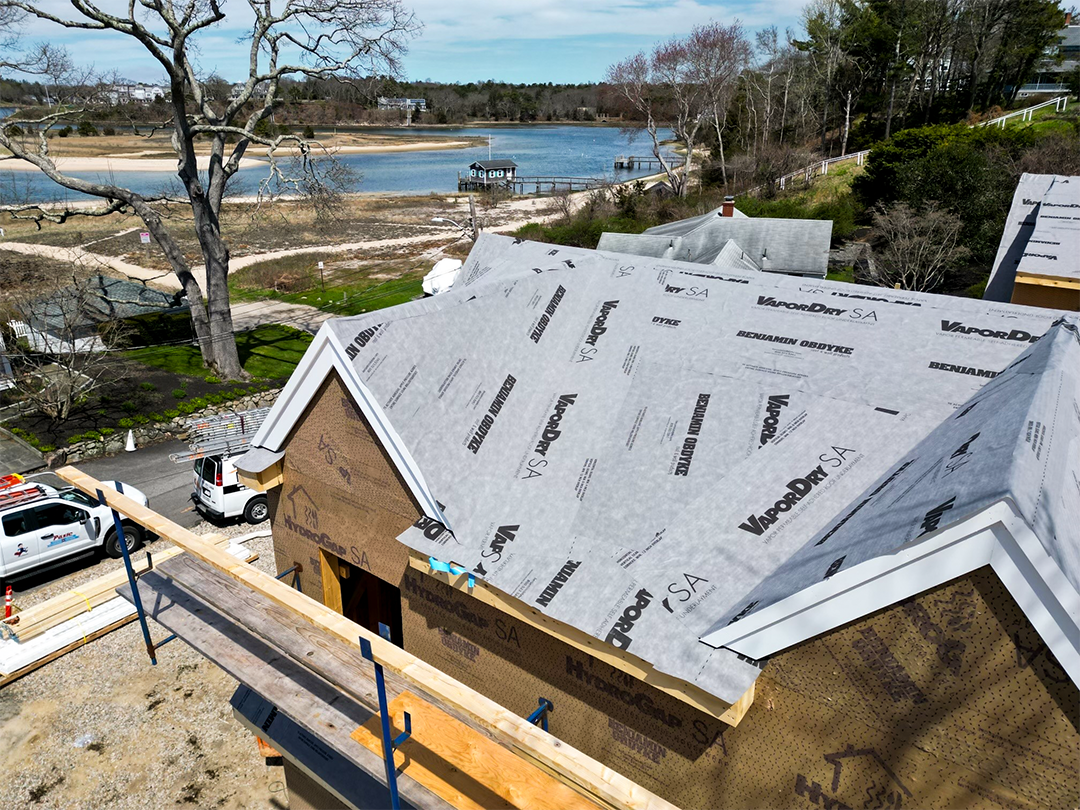When it comes to home design trends and shifting preferences, the building envelope tends to change a little slower than more aesthetic-oriented categories like faucets or paint. But with ever-tightening energy codes and continued innovation by manufacturers within the weather barrier, cladding, roofing, and insulation categories, there’s plenty to be thinking about behind the walls, too.
Here are a few of the headline-grabbing trends that will impact the building envelope this year:
Air Tightness & Building Codes
More and more jurisdictions are adopting the 2018 and 2021 building codes, which enacted stricter energy requirements, including blower door testing. As a result, air tightness within the wall and roof assemblies continues to take center stage. Products such as HydroGap SA housewrap and VaporDry SA roofing underlayment, both of which have a self-adhered backing that will seal around all fasteners to act as an air barrier as well as a moisture barrier, are ideal options for helping to meet these new goals.

HydroGap SA Samples
GET YOUR FREE SAMPLES TODAY OF THE FIRST EVER SELF-ADHERED DRAINABLE HOUSEWRAP
More Insulation
Another area the latest building codes have impacted is R-value, upping the wall requirement to R-30, a level previously required just for the roof. This means builders have to rethink their insulation. Most batt insulation can’t meet that requirement due to limitations in the size of the wall cavity. Some new insulation technologies are emerging, however, that could change that. In the meantime, expect a push for more spray foam insulation. But note that spray foam may separate over time, allowing vapor into the space that will need to dry out. This is why it’s important to think with a systems approach—work with Benjamin Obdyke to determine the air and moisture barriers best suited to the changes you might make to the insulation specification.
Conditioned Attic Spaces
The increasing push toward more energy-efficient homes—whether due to more stringent codes or homeowner demand—has led to more attics being conditioned.
Unfortunately, they’re often not designed with proper vapor permeability nor adequate ventilation, which can lead to trapped moisture, condensation, and eventually mold and rot on wood sheathing and premature roof failure. For homes with conditioned attics, a vapor-permeable underlayment like VaporDry SA can help moisture escape to help keep the roofing system dry.
Energy Upgrades
With higher interest rates forcing many homeowners to opt to stay put rather than sell, home upgrades are helping to ease the blow by updating aesthetics and increasing energy efficiency. When updating the home’s exterior with new siding to boost curb appeal, it’s easy to also upgrade the building envelope for increased moisture and air resistance using HydroGap SA. And since many exterior remodels move up to more premium siding, HydroGap SA’s 96% drainage efficiency is often an ideal fit.
Learn more about HydroGap SA and VaporDry SA, or get in touch with us for support and resources to help Transform Your Craft.




